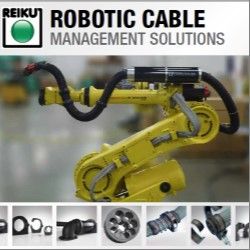Innovation networks tend to cluster around specific regions because all the necessary ingredients of finance, people, infrastructure & regulation tend to converge in one area by accident & design.
Where will the 3D Printing Industry Cluster?
Contributed by | Vozag.com
Innovation networks tend to cluster around specific regions because all the necessary ingredients of finance, people, infrastructure & regulation tend to converge in one area by accident & design. Tiny initial advantages (e.g. Stanford University) tend to magnify into network effects (e.g. great engineering talent attracts financiers which attracts more talent & so on). Therefore, it is fascinating to watch the nascent 3D Printing & handicap which area would become the cradle of 3D printing innovation.
One of the most important factors in trying to forecast a future cluster is to try to understand where the leading financiers in an industry are located. For e.g. Albert Wenger of Union Square Ventures (the VC firm behind Twitter, Tumblr, Etsy & other leading companies) is based out of New York City & led the financing of Shapeways, the leading 3D printing market place. Shapeways actually moved its operation from Netherlands to New York & had an easier time raising its Series A financing because of that. The Series C expansion capital was provided by Chris Dixon, a partner at the leading venture capital firm, Andreessen Horowitz. Chris was earlier based out of New York City but then moved to Silicon Valley when he joined Andreessen Horowitz. Shapeways themselves may have been attracted to New York because of Makerbot’s large presence in New York. Could these tiny advantages of initial companies & financier interest tip the balance in favor of New York City?
However, with the rise of Crowdfunding, do institutional capital networks such as venture capital play such an important role in seed funding? Vozag analyzed Kickstarter financing data from 32 3D printing projects that raised more than $100k. The analysis revealed that the original teams & projects were based all over the US & the world. The financing map reveals projects in Utah, Colorado, Montana, South Dakota & Oregon.
Will the rise of crowd funding networks & its distributed nature of financing break the paradigm of clustered industry corridors? Or will only the seed financing be distributed & as companies grow up, will they naturally cluster along a corridor?
The content & opinions in this article are the author’s and do not necessarily represent the views of RoboticsTomorrow
Comments (0)
This post does not have any comments. Be the first to leave a comment below.
Featured Product

